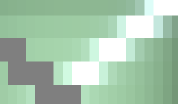
In this paper, we describe a method to estimate BRDF measurements for different printed colours, using just the BRDF measurements of the substrate and the primary inks. A model is trained using the BRDF measurements of the unprinted substrate and the cyan, magenta, and yellow inks, where four different diffuse and specular measurements of each are used as predictors to find the reflectance factor at a different lighting and viewing angle. In this approach only four spectral measurements of each test colour are required to estimate BRDF. This reduces the number of measurements required to estimate BRDF of a printed surface and to estimate the spectral reflectances that describe its material surface characteristics.

Goniospectrophotometer ConDOR designed by CNAM, France, measures BRDF at very high angular resolution (0.014°), comparable to that of human vision. This is achieved using a very collimated light beam and a dedicated Fourier lens. Interestingly, the BRDF of glossy surfaces measured at this resolution exhibits a granular aspect around the specular direction, like a rapid angular fluctuation, which is not detection noise as it is repeatable between successive measurements on the same sample. Based on our experiments using ConDOR as well as numerical simulations, we claim that this granular aspect comes from an optical effect called speckle, which occurs every time a sufficiently coherent light beam — which is inevitably the case when the incident solid angle is very narrow — strikes a rough surface. First elements of confirmation are given in this paper.